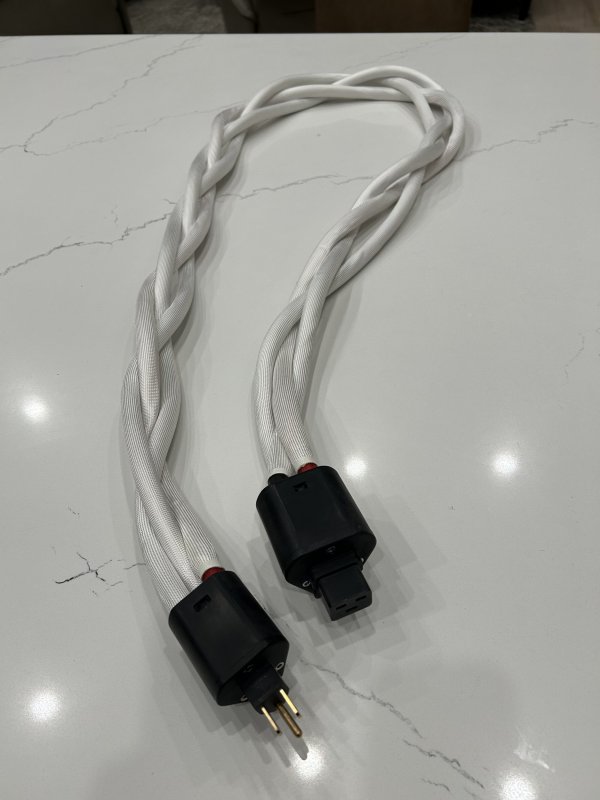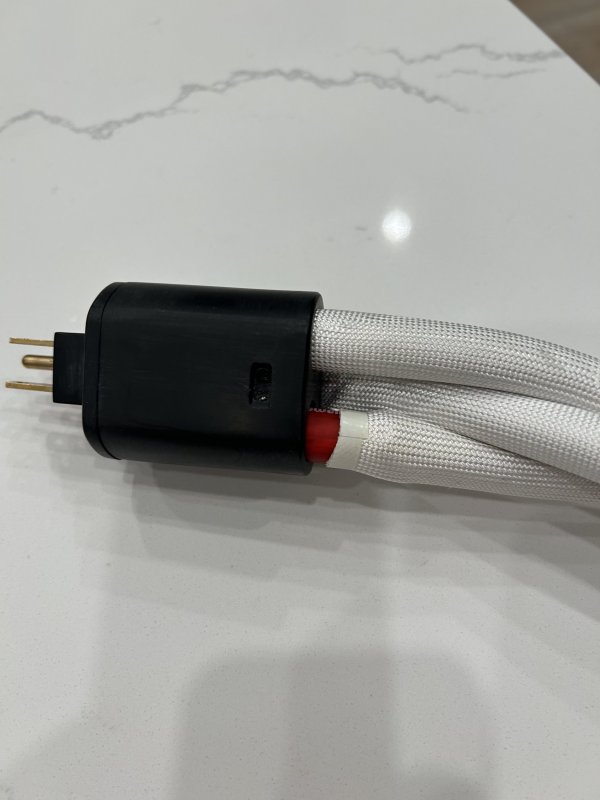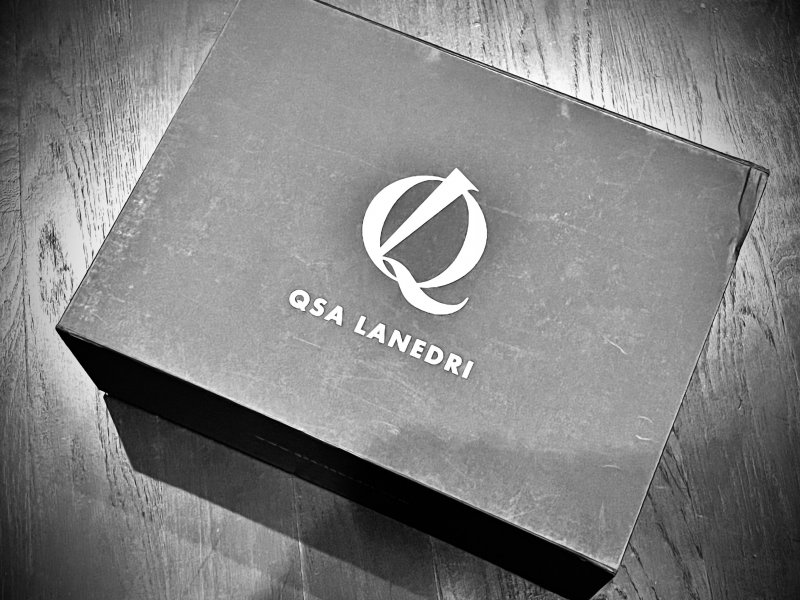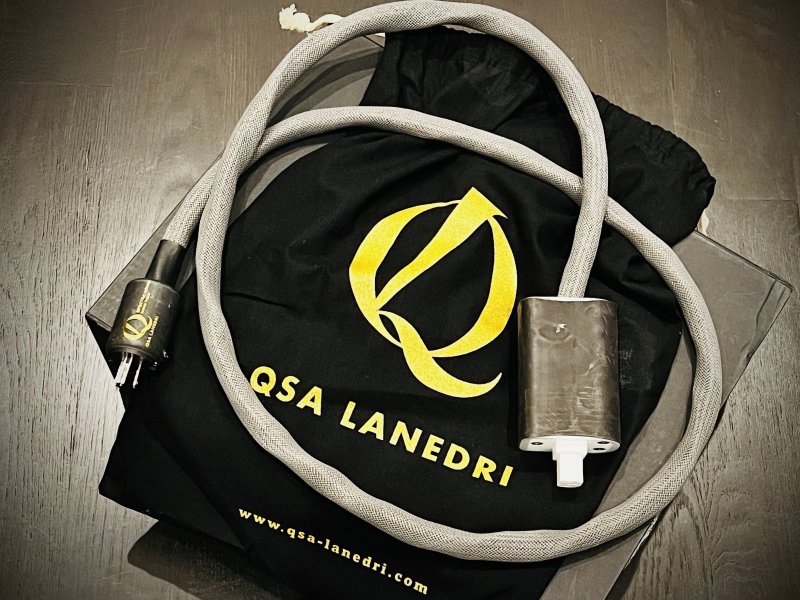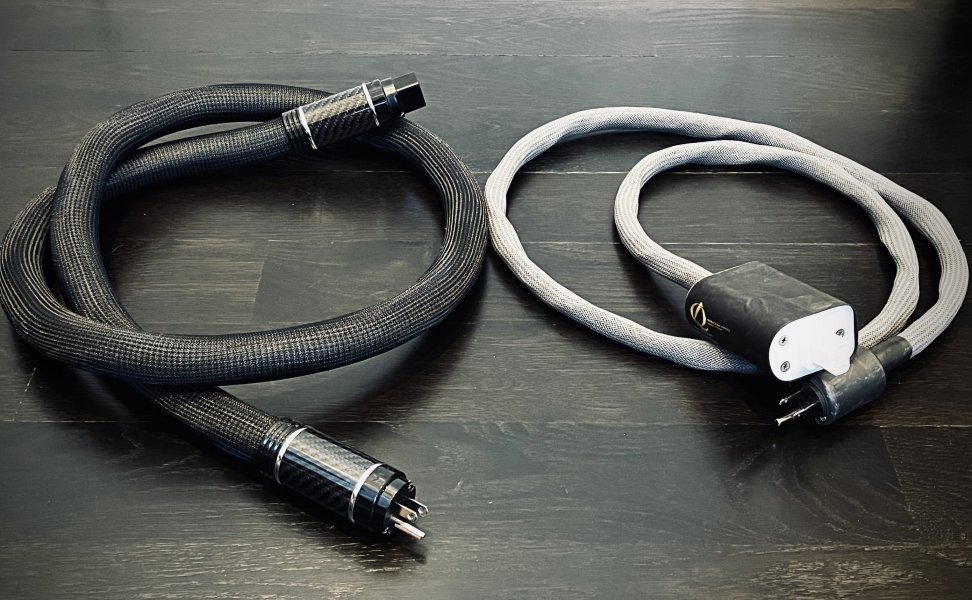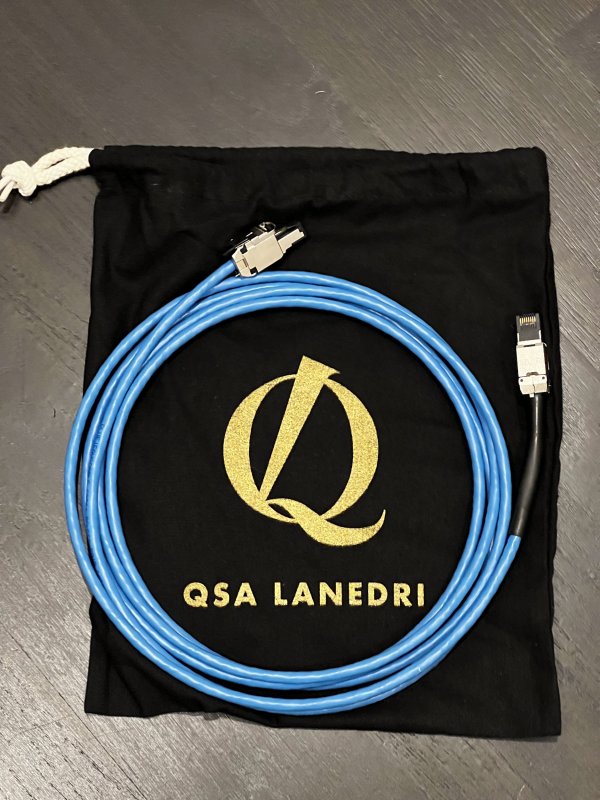This is a review of the latest combo cable of Anas and QSA team that combines a King Sablon and a Horn Silver gamma cable. Before diving into the weeds, please bear with me for a long winded introduction, as I'll provide a little background about my system and where I stand at the moment. Firstly, I have been in a very good place with my system, I had found a house sound that I can relate to with Mark's fantastic Sablon cable, that provides a divine combination of precision, density and imaging with a loom of his cables. I am truly impressed by his (or one of) masterpiece with the Sablon King, and little can really be improved upon IMOH. I was pretty much there with the Dave, that has off chart PRAT and provides this near holographic experience. Last, the cherry on the cake was a fantastic Woo Wa33 that provides resolution, slam, and this mid-bloom. So "what else" ? This was pretty much end-game and I have been happy with this system for the last couple of year.
Now, something happened, which reminds me of another revolution in the field of photography. For a long time in the early millennium you'd have been happy with a Zeiss lens, you'd have this fantastic microcontrast, warm colours, and magic 3D pop and a "je ne sais quoi" that provides charm to the composition, with Batis, Loxia, Otus as kings of their game. Then came the ultra-high resolution sensors, and the Zeiss lens kept-up as it was merely more pixels that resolve more noise, the "grain" didn't bring much to the table. Until ultra-high resolution and technical lenses came into the game, and then unfortunately that was Zeiss' demise (they actually this year officially announced that they wouldn't produce any development on the lens side). The combo high-resolution lenses and sensors just started to beat German engineering, the tech science of oxide transistors versus decades of craftsmanship, providing both character AND precision.
So back to audio, what happened here? It started with Taiko, that hinted that the DAC ultimately doesn't matter so much (10-30% according to Emile) once you get a uber-low noise source. Especially true if you pass the DAC filter by offloading the upscaling (PGGB another key component here, several million tap at 256 bit precision, not something you can or want to do in a DAC in real time!). A different take, different continent, but Dan Mance from Audiowise had been advocating for RF/EMI pollution as a key limiting factor for years, and made the fantastic discovery that a Chord Mojo2 with the latest Rob Watts crown achievement FPGA, at 104 bit resolution for noise shaping (he has provided a true gift to the masses here, putting a new revolutionary FPGA in a miniature device that comes at the lowest point of the price chain), ultra-low power (you have to see the size of this thing!) and running on battery, actually beats (by far I have to say!) a Chord Dave. This involves some engineering as well, eg bypass USB with SRC-DX, and the typical Chord-like quirks. Shielding this with Mu-metal for magnetic screening also helps, and Dan now has a cool technology on filtering RF with skin-effect to avoid
inducing extra losses in the chain (a review on this soon at as I am awaiting Dan's new tech).
Anyhow, off my Dave went (similarly to my old Zeiss lens), left with my Woo, that revealed part of this large chunk of resolution, but now, was the Woo a limiting factor? I had another solid state amp under the radar, and went for a road-test. The extra resolution unfortunately was even more apparent, but also coupled to noise, in analogy to all these extra pixels that provide noise at high ISO. So a mix bag!
I should say that I live in a crowded place, and I early could tell my system is in a bath of RF and EMI,
I don't have the luxury of setting a dedicated line as we are renting. So RF and power noise are definitely there, what about taking care of this? I have invested into an Everest, that does a magnificent job, now the Altaira Signal, that again brought the noise floor down.
What came as a last resort is QSA. I'll be honest, I have been very skeptical, and another factor is my
reluctance at going any inch from the Sablon cables. Anas kindly suggested that I try one of his new
development, the so-called combo power cable, that creates a hybrid creature out of a Sablon King and
a Gamma Horn Silver treated. Beyond all the gold, silver, horns, Kings, that are all very jolly and bring a little bit of a 1001 Arabian night feel, we just entered into serious business here:
Plugging this cable into the Extreme, and replacing a Sablon Prince and King untreated, brought down the noise floor so low, combined with my little Mojo running on battery, that my SS amp (also running on battery) now was clearly singing like never I thought it would! I had now both the resolution AND the
velvet of the Woo, my SS amp was very much tube like now! Everything comes at a price, the Woo
still wins with macrodynamics, soundstage is a little wider, but hey, the Woo is one of the best amp that you may find out there, and at 10W it will do a little better in some way than my Shanling SS M30. But in any case, the combination of resolution and lack of harshness gave me a little taste of what's coming next in the Taiko world, the Extreme on battery!
In conclusion, I was very skeptical, but the latest Lanedri cable does tackle RF and noise, and is an additional fantastic tool in the toolbox to address this. If you live like me in a dense urban area, I think
there is simply no single magic wand to treat RF and EMI, you need a breadth of approaches, and
here QSA excels. It will be very system dependent, and YMMV, but it definitely worked very well in my
system, that now runs on battery with the Taiko on QSA combo cable. It made my system simpler,
and also strange! You get now an Extreme connected to a Mojo 2, itself connected to a modest M30,
beating my Dave+Woo Wa33. But again, I took an open minded empirical approach, I follow what actually works against what should work, and see where it takes me, against all odds! Something that might
put a final note on my chain is the recently released Korean/Japanese Enleum RM23.
If you fancy yourself a Woo, let me know as it is now up for sale! (with the great TK274). As we need
to save on space estate, it also fits better the WAF atm. I hope you somehow enjoyed reading this, and it provides some useful data points, I tried to remain objective throughout, but you may discern some
excitement here, so add a grain of salt to mitigate the feedback

. As a final note, I should say that all these developments rest really upon the shoulder of giants, Mark Coles, Dan Mance, Robb Watts, Emile/Ed from Taiko and team, and I think Anas may have joined the choir in a timely manner.



